

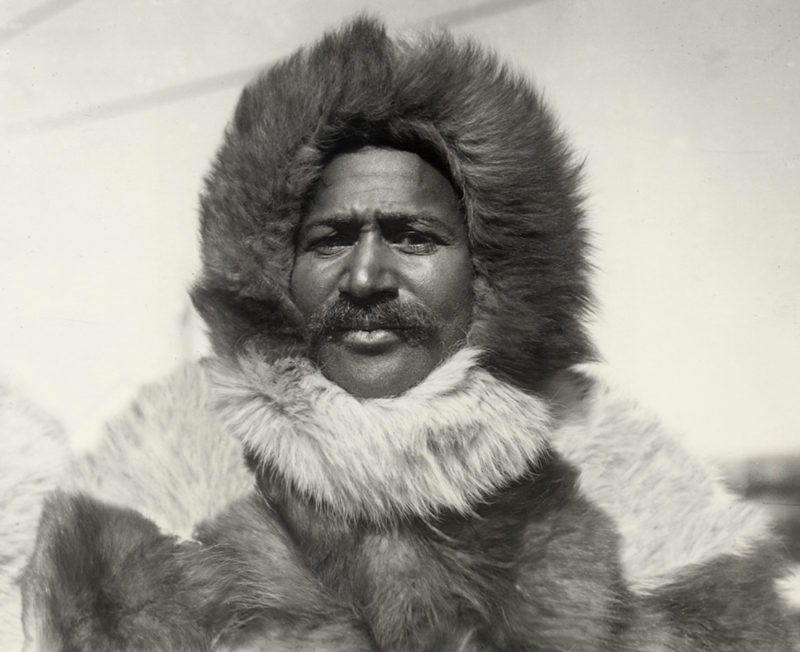
From the North Pole to UD
Photo by Evan Krape and courtesy of The Explorers Club, NYC, and Bradley Robinson April 05, 2019
UD student conserves mittens worn on 1909 expedition
Editor's note: The historic photos of Matthew Henson are used by permission of www.matthewhenson.com, a free public service provided by Bradley Robinson.
The way Matthew Henson described it, the brutal cold that punishes those who dare to approach the North Pole is enough to turn a man’s flesh into something like hamburger.
“Freezing of the nose and the whole front of the face is an ordinary occurrence,” he wrote in 1910. “The skin keeps peeling off and freezing again until that part of the face is like raw beef and it leaves spots on the face like smallpox.”
Henson’s hobbling partner in exploration, Robert Edwin Peary, had lost nine of his 10 toes to frostbite on one expedition.
So the sealskin mittens Henson wore on April 6, 1909, when he and Peary and four Inuit guides reportedly became the first — there is continuing debate — to reach the North Pole, deserve a good bit of credit for keeping the brilliantly resourceful Henson alive.
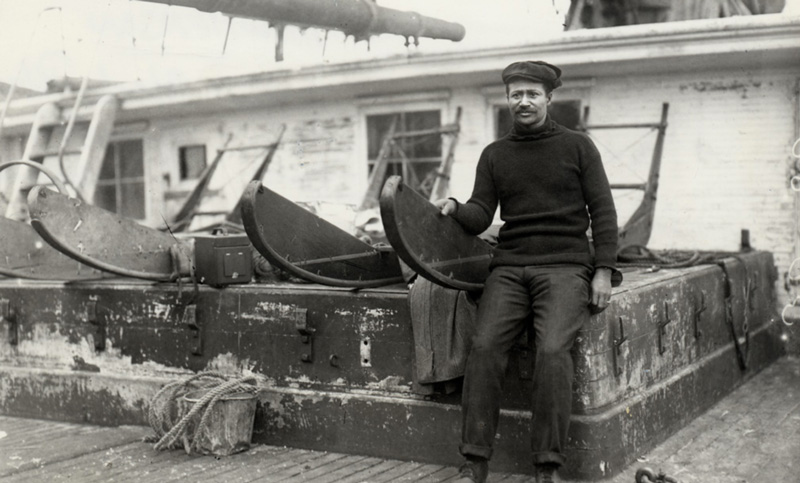
Whether they were first or nearly first, Henson was without question the first African-American to sledge across the ever-shifting ice of the Arctic Sea and stand on top of the world, the truest north of all, where all directions point south.
The harsh conditions and the intervening century took their toll on the mittens, though. They were matted, rigidly creased and brittle in some places, compromised by insects in others.
Then they wound up in the hands of Caitlin Richeson, a student in the Winterthur/University of Delaware Program in Art Conservation, directed by UD’s Debra Hess Norris, the Unidel Henry Francis du Pont Chair in Fine Arts.
At Richeson’s workbench, they found new life.
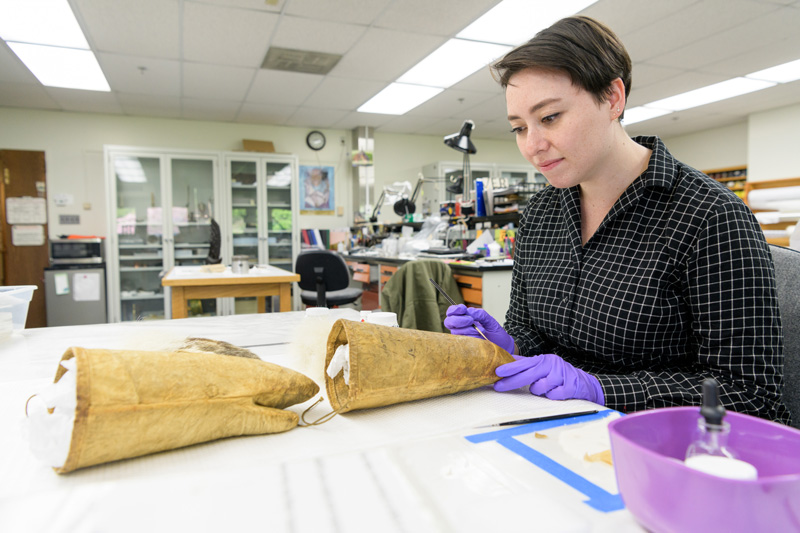
A long journey to UD
Why, you might ask, would the owner of these mittens trust a student to tend to them?
Lacey Flint would know that. She is the archivist and curator of research collections at The Explorers Club of New York City, to which Henson gave the mittens in 1934. The Explorers Club counts an astonishing swath of history’s most adventurous luminaries among its members — the first to the North and South poles, the first to the top of Mount Everest, the first on the surface of the moon, the first to the deepest point in the ocean. Henson is among them.
Richeson had toured the Explorers Club before starting her graduate study at the Winterthur/UD program and was amazed by the collection she saw. She saw, too, that Flint was doing the work of 10 people.
“When I got into school,” Richeson said, “and started talking to Debra Hess Norris about what I had been doing in New York and my connection to the Explorers Club, I asked if we could do something to help them?”
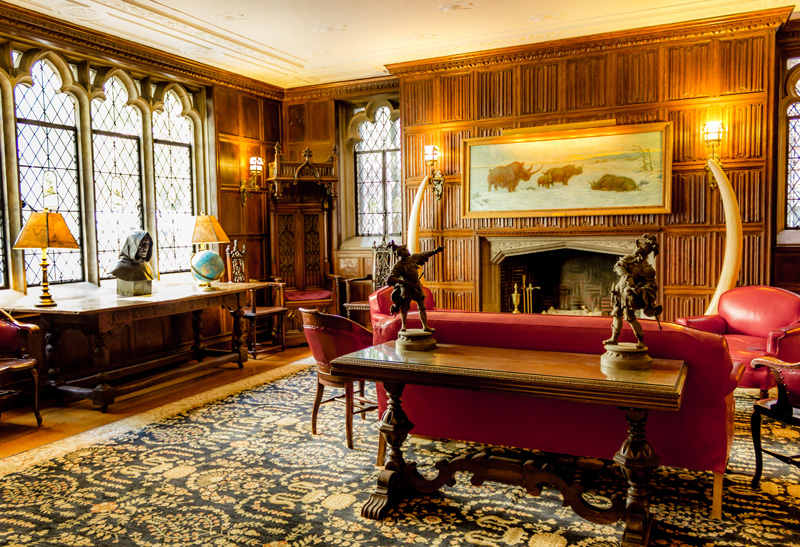
Richeson then learned that Norris had her own personal bond with The Explorers Club. Norris’ late brother, Peter Hess, an attorney and avid explorer who was part of multiple deep-sea shipwreck expeditions, had been a member and chaired the club’s legal committee.
They went together to The Explorers Club and Flint identified items in the collection that needed treatment. She pointed to the Henson mittens and Richeson could hardly believe her eyes.
As a child attending Gorman Crossing Elementary School in Laurel, Maryland, she had studied Henson — who was born about an hour away in Nanjemoy, Maryland — and written a report about why he was important to Maryland.
Henson’s story was untold for many years, as so many African-American stories were. Orphaned early in life, he found work as a cabin boy on a ship out of Baltimore, then as a clerk in a Washington, D.C., hat shop, where he met Peary. Impressed by Henson’s knowledge of seamanship, Peary hired him as a valet for an upcoming trip to Nicaragua. Having proved his skill, Henson accompanied Peary on seven Arctic expeditions, stretching over 20 years. He learned the Inuit language and survival skills that served the teams well. His recognition, though, would trail Peary’s by decades.
The ongoing debate about whether it was Peary’s team that reached the North Pole first or that of Frederick Cook, who claimed to have reached the pole in 1908 or perhaps another team has never been definitively resolved. You cannot plant a flag in shifting ice and expect it to stand until the next sledge arrives. The evidence available from both Peary and Cook was thin. The Explorers Club itself, having both Peary and Cook in membership, issued this statement in 1983: “The position of The Explorers Club in the Cook/Peary controversy is that we have no records or documents that settle the question one way or the other….”
Richeson just wanted to focus on Henson and his mittens.
“I said, ‘Debbie, I need this!’ And it became a project that followed me through the two years I was in residence at Winterthur,” Richeson said.
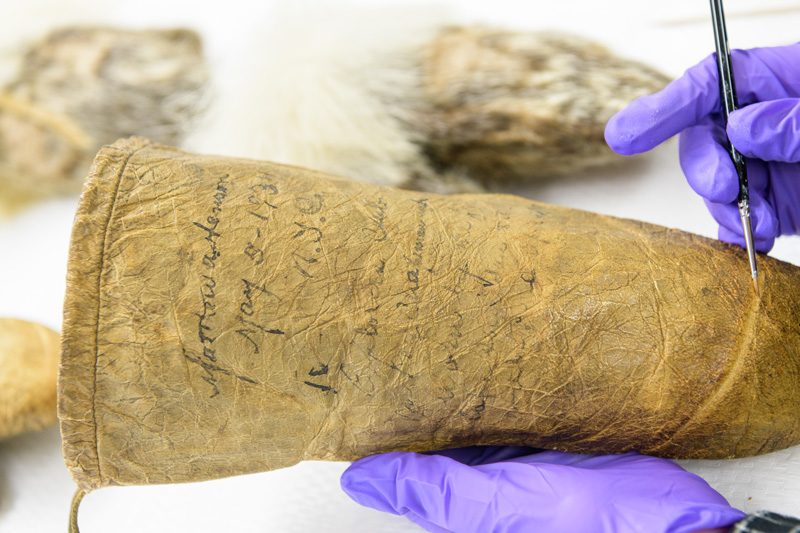
For all of those reasons, Flint lost not a moment of sleep turning the historic mittens and their polar-bear-fur inserts over to Richeson.
“Based on the reputation of the program and my relationship with Debra Norris, handing them over to Debbie and any of her students was never a question,” Flint said. “The people at the Winterthur/UD program have been so incredible and professional, I had no doubts. Whether to a student or a professor, I knew whoever ended up with it would take such great care of the mittens and the project. I met Caitlin a number of times. She had done so much pre-research on the expedition and Henson. It was blind faith. I handed them over and said, ‘Good luck.’”
Skill, science and painstaking detail
She knew Richeson would not rely on luck, of course. She would draw on the skills she gained in studies with the late Bruno Pouliot, Lara Kaplan and Melissa Tedone, all part of the Winterthur/UD program at the time. She would rely on careful scrutiny of the items, using ultraviolet light, infrared reflectogram examination techniques and X-ray fluorescence spectroscopy to analyze the materials, understand their true condition and develop a plan for treatment. She would also recommend and develop a storage system that would protect them in storage and any future travels.
Richeson did all of those things. And when her plan was approved, she documented each step of her work so that others would know exactly how she had proceeded.
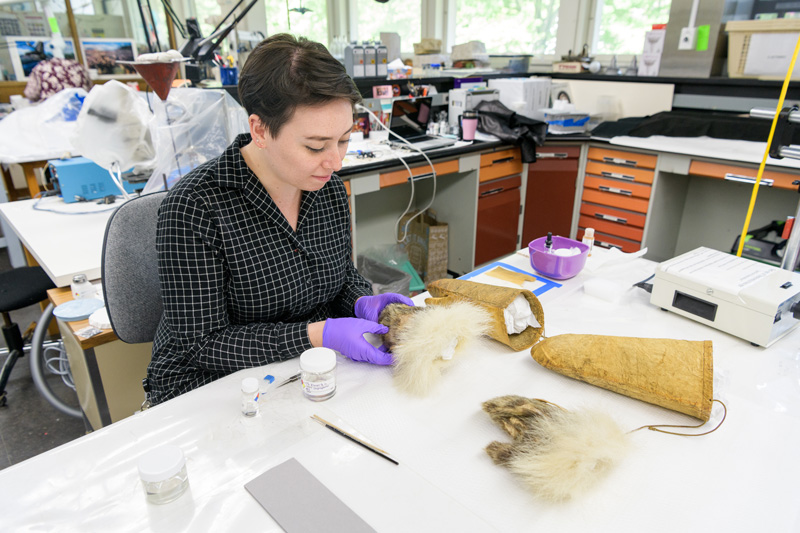
She photographed everything, cleaned the surface of the mittens and the inserts with cosmetic sponges, removed insect casings with tweezers, an African porcupine quill and a stereomicroscope and took tiny samples to analyze specific areas more closely.
The data from these analyses informed her work, allowing her to proceed without damaging the fragile materials. Among the toughest challenges: Using water vapor to humidify the mittens and inserts, restore their shape and prevent tears and cracks in the leather.
It was painstaking work that continued for months. The treated mittens soon will make their return trip to New York City. But the work already is drawing high praise from Flint, who received photos from Richeson, now completing her third year of study and final internship at the Museum of Modern Art.
“They look absolutely incredible,” Flint said.
Seeing the treated mittens reminded Flint of an encounter she had during a celebration of Henson’s 150th birthday. She brought the mittens to that event, she said, and one of Henson’s great grandsons picked one of them up. What he said has stuck with her.
“I feel like I’m shaking hands with my great grandfather,” he said.
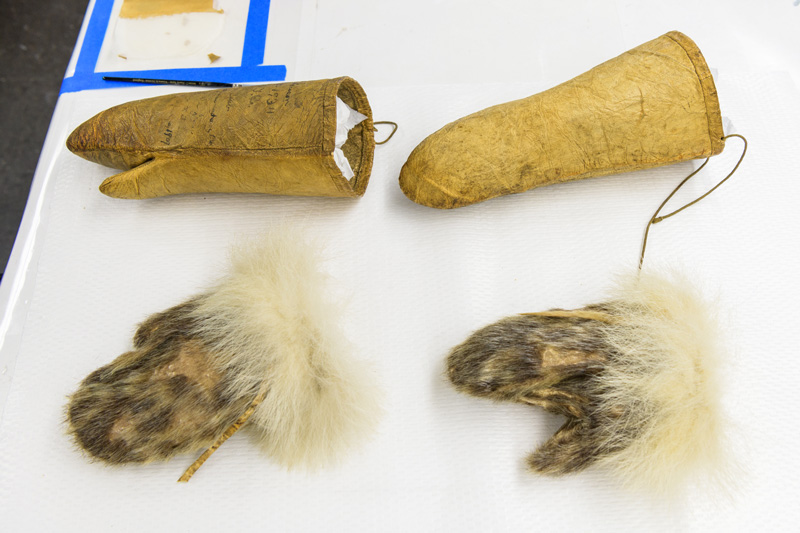
The mittens have been on display many times — on loan to national buildings and museums. During one of those trips last year — to the Fashion Institute of Technology — the mittens and Henson’s full expedition suit were reunited for the first time, Flint said.
The Explorers Club also has a sledge from the Peary-Henson expedition hanging from a ceiling, she said, and about 60 lantern slides. Other objects and photographs from the Club’s collections have also been treated by students in the Winterthur/UD program.
“Over the past three years our graduate and undergraduate students have worked with collection materials from the Explorers Club that have included, in addition to the Henson mittens, 10 boxes of 19th century albumen prints documenting the Arctic Age of Exploration and 20th century prints and albums that record discovery,” Norris said. “These challenging preservation projects allow our students to analyze and preserve images and artifacts that celebrate humanity, discovery and our global connection. Our students have recommended strategies for collections care as well. For me personally, this work is a tribute to my beloved brother, Peter, who — as an Explorer — truly treasured the club’s remarkable collections and raved about their significance and rarity often.”
The work has been of extraordinary benefit to the Explorers Club, Flint said.
“I can’t stress enough how grateful we are to Winterthur and the University of Delaware for taking on so many projects and giving me that peace of mind,” she said. “The program is so strong and the people are so professional and know what they’re doing. They have transformed this collection.”
Henson and the University of Delaware
In 2009, Henson’s great-great-great-grand niece, Leila Savoy Andrade, accepted the American Geographical Society’s Cullum Geographical Medal on his behalf at a ceremony at the University of Delaware, part of UD’s William S. Carlson International Polar Year Events. The Cullum Medal is the AGS’s oldest, established in 1896, and recognizes “those who distinguish themselves by geographical discoveries or in the advancement of geographical science.”
In the summer of 2018, students from historically black colleges and universities (HBCUs) visited UD to learn principles of art conservation. Five of them spent two weeks with UD’s Joyce Hill Stoner, Rosenberg Professor in Material Culture, working on materials owned by Tuskegee University, including a diorama depicting the expedition Henson and Peary made to the North Pole.
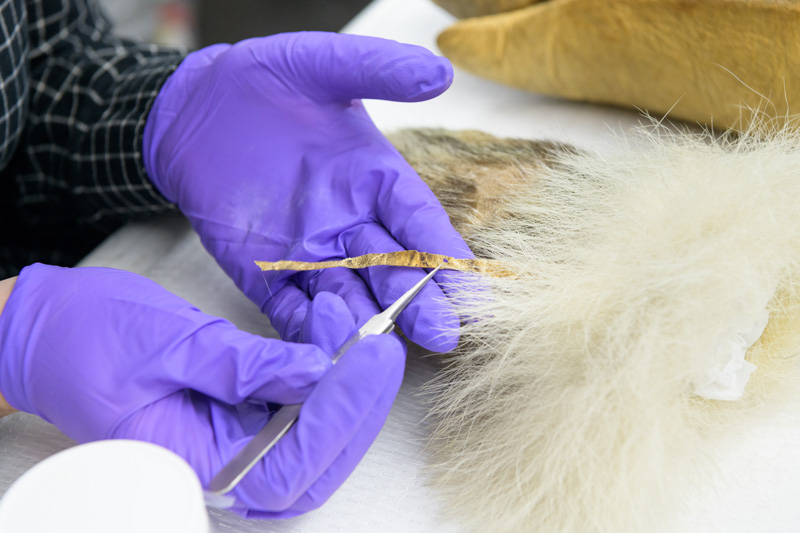
Contact Us
Have a UDaily story idea?
Contact us at ocm@udel.edu
Members of the press
Contact us at 302-831-NEWS or visit the Media Relations website

